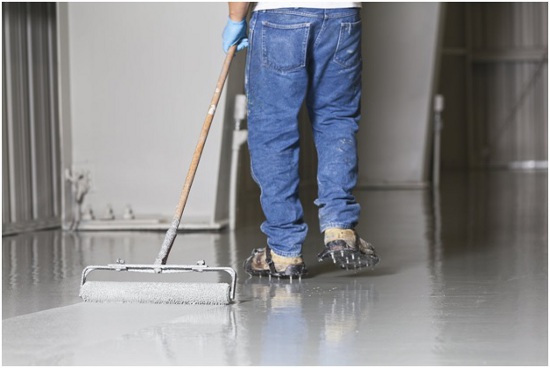Concrete floors are a durable and attractive option for many commercial and residential spaces. They’re known for their longevity and easy maintenance, but over time, they can show signs of wear and tear. If you’ve noticed that your concrete floor isn’t looking its best, it might be time to consider resurfacing. But when exactly should you take on this project? Let’s look into the indicators that suggest it’s time to resurface your concrete floor.
Understanding Concrete Resurfacing
Before we dive into the ‘when,’ let’s first understand the ‘what.’ Concrete resurfacing is a process that involves applying a thin layer of a polymer-modified or cement-based overlay to the existing concrete. This procedure helps to restore the appearance of the floor, making it look like new without the need for a complete replacement.
Signs That It’s Time to Resurface Your Concrete Floor
1. Visible Cracks: Cracks are one of the most common signs that your concrete floor needs attention. While small, hairline cracks might not require immediate action, larger cracks that continue to expand over time can lead to significant damage. If you notice such cracks, it’s likely time to resurface your concrete floor.
2. Surface Discolouration: Over time, your concrete floor may become discoloured due to exposure to sunlight, chemicals, or heavy use. If cleaning doesn’t restore the original colour, consider resurfacing to rejuvenate and revitalize the surface.
3. Uneven Surfaces and Pitting: If your concrete floor has developed pits or has become uneven, these could be signs of underlying damage that needs addressing. Resurfacing can help restore a smooth, even surface and prevent further deterioration.
4. Age of the Floor: Even if your concrete floor doesn’t show visible signs of damage, its age can be a deciding factor. If your concrete floor is more than 20 years old, it might be worth consulting with a professional about whether it’s time for resurfacing.
5. Recurring Moisture Issues: If your concrete floor is often damp or has recurring moisture issues, it might be time to consider resurfacing. Moisture can lead to the development of mould and mildew, which can cause health issues and further damage to the floor. Resurfacing can help address these moisture problems by providing a new, sealed surface.
6. To Increase Property Value: If you’re planning on selling or renting out your property, resurfacing your old, worn-out concrete floor can significantly increase its value. A newly resurfaced floor not only enhances the aesthetic appeal of your property but also signals to potential buyers or tenants that the property is well-maintained.
7. Safety Concerns: Old, worn-out concrete floors can become a safety hazard, especially if they’re cracked or uneven. These imperfections can cause people to trip and fall, leading to potential injuries. By resurfacing your concrete floor, you eliminate these hazards and create a safer environment.
8. Restoring Functionality: If your concrete floor is in a commercial space or garage where heavy machinery or vehicles are used, wear and tear can affect the functionality of the space. Deep grooves or uneven surfaces can interfere with the operation of machinery or make it difficult to move equipment. Resurfacing can restore the functionality of these spaces.
9. Eco-Friendly Solution: Concrete resurfacing is an environmentally friendly choice because it uses the existing concrete slab, thereby reducing the amount of waste going to the landfill. Instead of removing and replacing the entire floor, you’re simply adding a new layer on top, which uses fewer resources.
10. Preventing Further Damage: Small cracks and pits in your concrete floor can allow water to seep into the concrete, causing further damage. By resurfacing your concrete floor, you’re sealing these small imperfections and preventing water intrusion, which could lead to more serious issues like structural instability.
The Benefits of Concrete Resurfacing
Aside from addressing the issues listed above, concrete resurfacing offers several benefits:
- Cost-Effective: Compared to replacing the entire floor, resurfacing is a more cost-effective solution that delivers similar results.
- Aesthetically Pleasing: With a variety of colours, patterns, and finishes available, resurfacing can significantly enhance the aesthetic appeal of your space.
- Increased Durability: A resurfaced floor is not only visually appealing but also more resistant to wear, providing increased durability for high-traffic areas.
In Conclusion
Knowing when to resurface your concrete floor can save you time, money, and prevent further damage. If your floor shows signs of cracking, discolouration, pitting, or is just showing its age, it might be time to consider resurfacing. Remember, while it’s possible to undertake this as a DIY project, hiring a professional will ensure the job is done right the first time, giving your floor a fresh new look and extended lifespan.




















